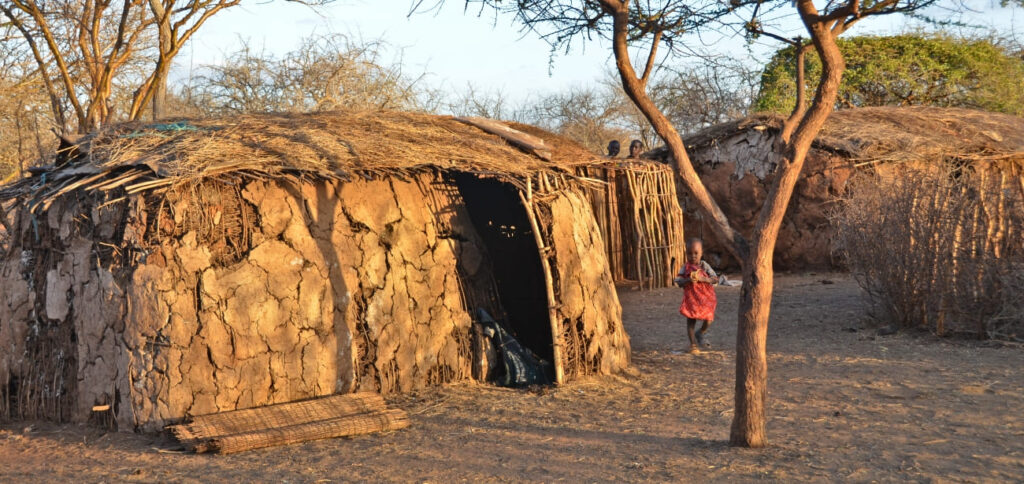The Maasai people are one of the most iconic and recognizable ethnic groups in Africa. Known for their distinct traditions, vibrant attire, and rich cultural heritage, the Maasai have intrigued and fascinated people worldwide. Here are ten fascinating facts about the Maasai people that shed light on their unique way of life.
1. Distinctive Traditional Attire

The Maasai are easily identifiable by their striking red shukas (cloth) and intricate beadwork. The red color is symbolic, representing courage, strength, and their pastoralist lifestyle. Beadwork plays a significant role in Maasai culture, with different colors and patterns denoting various aspects of life, such as age, marital status, and social standing.
2. Semi-Nomadic Lifestyle
Traditionally, the Maasai are semi-nomadic pastoralists, moving with their cattle herds in search of grazing land and water. Cattle are central to their culture, serving as a primary source of food, currency, and social status. The Maasai’s movements are dictated by the seasons and environmental conditions.
3. Rich Oral Tradition
The Maasai have a strong oral tradition, with knowledge and cultural values passed down through generations via storytelling, songs, and proverbs. Elders play a crucial role in this oral transmission, ensuring the community’s history and wisdom are preserved and conveyed to the younger generations.
4. Rite of Passage Ceremonies
The Maasai are known for their elaborate rite of passage ceremonies. One of the most significant is the “Enkipaata,” a rite marking the transition from boyhood to warrior status. This ceremony includes circumcision and is celebrated with dancing, singing, and feasting. The transition from warrior to elder is another important milestone, marked by the “Eunoto” ceremony.
5. Living in Manyattas

The traditional Maasai dwellings are called manyattas, which are small, temporary huts made from mud, sticks, grass, and cow dung. These structures are designed to be easily dismantled and rebuilt as the Maasai move to new grazing lands. A typical manyatta houses an extended family, reflecting the communal nature of Maasai society.
6. Maasai Warrior Culture
Maasai men are renowned for their warrior culture. Historically, young men, known as “Moran,” underwent rigorous training to protect their communities and livestock from predators and rival groups. While the role of the warrior has evolved, the image of the Maasai Moran remains a powerful symbol of bravery and resilience.
7. Diet and Food Practices

The Maasai diet primarily consists of meat, milk, and blood from their cattle. Blood, mixed with milk, is consumed during special ceremonies and is believed to have health benefits. While their diet has traditionally been limited to what their livestock can provide, some Maasai communities have started incorporating other foods due to environmental changes and modern influences.
8. Environmental Adaptation
The Maasai have a deep understanding of their environment and practice sustainable land management. Their semi-nomadic lifestyle allows the land to regenerate and supports biodiversity. However, they face challenges due to changing climatic conditions and land-use policies that restrict their traditional grazing practices.
9. Cultural Tourism
In recent years, the Maasai have embraced cultural tourism as a means of preserving their traditions and generating income. Visitors to Maasai lands can experience traditional dances, crafts, and rituals, gaining a deeper appreciation of Maasai culture. This tourism helps support their communities economically while raising awareness about their way of life.
10. Modern Challenges and Adaptations
The Maasai face various modern challenges, including land rights issues, access to education, and healthcare. Despite these challenges, they have shown remarkable adaptability. Many Maasai now balance traditional practices with modern opportunities, such as education and employment in urban areas, while still maintaining their cultural identity.
FAQs
Q1: What language do the Maasai people speak? The Maasai speak Maa, a Nilotic language. They also often speak Swahili and English, especially those who engage in tourism or live in urban areas.
Q2: Are Maasai communities only found in Kenya? No, the Maasai people live in both Kenya and Tanzania, predominantly in the Great Rift Valley region.
Q3: What is the significance of cattle in Maasai culture? Cattle are central to Maasai culture, serving as a source of food, wealth, and social status. They are also used in rituals and as a form of currency.
Q4: How do the Maasai contribute to biodiversity? The Maasai’s semi-nomadic lifestyle and sustainable grazing practices help maintain ecological balance and support biodiversity in their regions.
Q5: Can visitors stay in Maasai communities? Yes, many Maasai communities offer cultural tourism experiences, including overnight stays in traditional manyattas, allowing visitors to immerse themselves in Maasai culture.
Final Thoughts
The Maasai people exemplify a unique blend of tradition and adaptability. Despite facing numerous modern challenges, they continue to preserve their rich cultural heritage and contribute significantly to the region’s biodiversity and cultural diversity. By learning more about the Maasai, we gain a greater appreciation for their way of life and the resilience that has defined their community for centuries.



